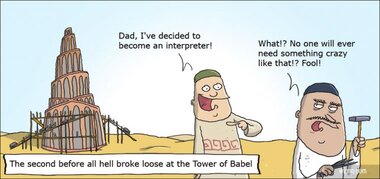By M.P. JOSEPH This is the second of a three-part analysis of the Government’s draft New Education Policy. First published in Millennium Post on 29 July, 2019First published in Millennium Post on 29 July 2019
Change received an unassailable pole position world-wide, when in 2008, Obama won the US Presidential race with his trumpeting war-cry Change. Thereafter everyone wanted change. The direction of the change was immaterial – and be damned.
Often then – as much in Obama’s case as in others – such change for change’s sake leads nowhere. Change simply becomes the new status quo.
The French with their ‘mot juste’, have a nice way of putting it, ‘plus ca change, plus ca meme chose’, meaning that the more we change things, the more it is back to the same old thing.
The Kasturirangan Committee that drafted the New Education Policy NEP would have faced a quandary. Since a New Education Policy must be new, the existing policy must be changed. So the draft NEP has perforce had to change many aspects of schooling as we know it. But many of these changes seem to be just that: change for the sake of change.
For example, the NEP seeks to rename some of the existing terms we have been familiar with. Grades 3, 4 and 5 would no longer be primary classes in a primary school. They would be called Latter Primary. Presumably then Classes 1 and 2 would be Former Primary. But no, they are just Primary.
Children in the age group of 3-8 would henceforth form a new sub-set of which children between 3-6 would continue to be in Anganwadis and pre-schools, while children between 6-8 would be in Grades 1 and 2. From 8-11 they would be in Grades 3-5 in – yes – Latter Primary, while children from 11-14 would be in Grades 6-8 in Upper Primary. Secondary School would be from Grades 9-12 of which children between 14-16 would be in Grades 9-10 which would continued to be called Secondary School while children between 16-18 would be in Grades 11-12 and would continue to be called Higher Secondary School.
A bit confusing altogether? Indeed, that is what would happen, when change is brought in for the sake of change.
What is more tragic however is that while the draft speaks of bringing in quality education, it does not quite spell out how that quality education would reach the poorest of poor children. The bane of India’s education system has been that while we have highly subsidized centers of higher education, where a student who has done very well in school, has a plethora of opportunities for a professional or university education – scholarships, quotas, subsidies, bank loans, grants etc. – nothing even remotely so, exists for poor children to get a good quality primary education in our schools.
Across the country children of poor parents are continually denied quality primary education. The tallest barriers we have put for the children of our poor, is in providing them good quality primary education, which is possible only in privately run Public and International Schools where they have to spend copious sums of money as fees, donations, deposits and for buying books, uniforms, etc. Thus the children of our poor are condemned to attend government schools that provide terribly poor education.
Worse, government schools push out children – endearingly called drop out – from schools. The pushout is so gross that while the Gross Enrollment Ratio in 2016-17 for Grades 1-5 was 95.1%, it was a mere 51.3% in Grades 11-12. It almost appears to be a conspiracy to keep the poor uneducated and thereby keep them poor through generations.
Our schooling system is an inverted pyramid, where it is most difficult to enter the system at the early stages, ie. in a good school. But if you get through these strong barriers at the very early stages of a child’s education, it becomes easy to enter a University. The system is so built that the difficulty is surmountable only if as a young parent of a 5-year-old you are rich enough to admit the child in a ‘Convent’ or Public School.
In keeping with the draft’s emphasis on changing names, the NEP stipulates that Public Schools should no longer be called Public Schools but called Private Schools. Good that another Macaulayan aberration is killed off. But such changes will not make an iota of difference if today’s governments schools are not brought up to the level of such private Public Schools. Else the rich will continue to send their children to the newly named Private Schools while the poor will languish in government schools.
The NEP’s section on school education seems obsessed with the language issue. There is a strong undercurrent in it, to root out English from our schools. At one point the document even goes on to say, ‘we further observe that English has not become the international language that it was expected to become back in the 1960s’! And that specious argument is used to kill off English.
The argument for replacing English is ostensibly for promoting education in local and regional languages. But, if English is replaced, can the imposition of Hindi – across crores of non-Hindi speakers – be far behind?
Interestingly, there is a lot of emphasis in the draft NEP on the 3-language formula. But the 3-language formula has always been an insidious but successful attempt to teach and use Hindi in the South and East but nowhere teach – let alone use – a non-Hindi South or East Indian language in the Hindi belt. So while you will find Railway Stations have their names written out in English, Hindi and the local language in all the South and East Indian States – Tamil Nadu being a continuing exception – you will never find any South or East Indian language in any name board in any Railway Station in the Hindi belt.
The 3-language formula has been mostly used to spread Hindi in the non-Hindi speaking states with no successful attempt ever made in the reverse direction to spread non-Hindi languages in the North. And so, all of us South Indians, continue to be Madrassis.
With the draft NEP focused on suppressing English, the dominance of Hindi will only increase, grievously wounding – if not altogether killing off – India’s multi-lingual heritage.
Obsessed with language, the draft also has many areas where it tries to revive Sanskrit. Which is an enormously good thing, for Sanskrit is the root of many Indian languages. My mother tongue, Malayalam has many more words of Sanskrit origin than even Hindustani. Indeed, when speaking in Hindi, if I am hard-pressed for a Hindi word or phrase I simply use its Malayalam equivalent and I find my listener appreciating my Sudh Hindi.
While it is important to focus on reviving Sanskrit which is otherwise a dead language, the draft policy makes no attempt to expand the use of Tamil which is a living language and is as old – or even older – than Sanskrit, and used across many nations of the world. This step-motherly treatment of Tamil and other Classical Languages – and that includes Malayalam, also spoken today by a diaspora across the world – is not quite understandable. That is a danger latent in the draft NEP that needs to be addressed.
Lest I give the impression that the draft NEP has nothing much to offer on school education, let me point out some of the good that the draft offers.
Perhaps one of the most significant initiatives of the NEP is its attempt to seamlessly weave vocational skills education into academic education in schools. This would hopefully break down the mental barriers that the middle class – not to speak of the upper and rich classes – in India have towards vocational education. By insisting that at the upper primary and secondary levels every student should compulsorily take a vocational subject, the draft NEP goes a long way in wiping from our middle class minds the thought that skills and vocational education is somehow inferior to academic learning. No country can become great without sufficient focus on teaching a vocational skill or trade to the majority of its young. A country full of engineers and IAS officers would be a very weak country indeed.
Taking up at least one art for deeper study in schools is another innovation in the NEP. The NEP also focusses on the incorporation of basic ethical and moral reasoning. Students will be taught the importance of “doing what’s right”.
This is indeed important. However with the government now bent on re-defining what is right and wrong, with being told that things that we thought were right, are wrong, and things that we thought wrong, are right, don’t blame me if a frisson of fear, passes down my spine.
School students will also be taught current affairs, courses in critical issues facing the community, the country, and the world. The innate talents of every student – the NEP promises us – would be discovered, nurtured, fostered, and developed.
Most importantly assessment or exams would shift from one that primarily tests rote memorization to one that is more formative, promotes learning, and tests higher-order skills.
All good. But the lingering thought at the end of the day is that the NEP draft on School Education is less focused on substantials than on re-grouping and renaming. There is really no need for that. A rose by any other name would smell as sweet.
M.P. Joseph is a former Indian and UN Civil Servant. He belongs to the 1978 batch of the IAS and worked with the ILO in India and abroad for 20 years. He can be contacted on mpjoseph@hotmail.co.uk.
Disclaimer: The views and opinions expressed in this article are those of the author




